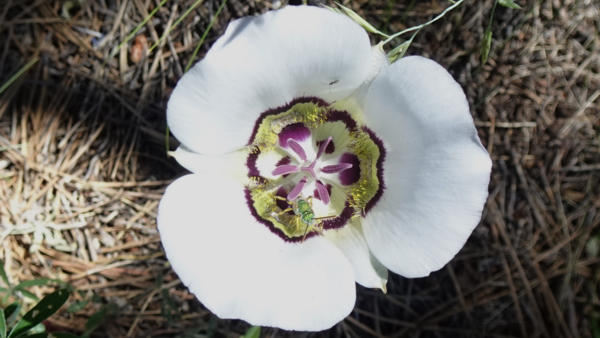It's not 'just a desert'
“Biodiversity starts in the distant past and it points toward the future.” — Frans Lanting
By DR. CAMERON BARROWS
There is a strongly held belief among most naturalists and ecologists that biodiversity is highest in the tropics and then diminishes across arid, temperate, and then arctic biomes.
What separates science from other beliefs or knowledge systems is that it is self-correcting. Over time, beliefs are tested and retested, and those beliefs are then either supported or, if the data say otherwise, rejected. A recent article (2021) by Robert Minckley and Bill Radke tested that belief regarding patterns of biodiversity. They measured the species richness of native bees across a small (16 km2) region of the Chihuahuan Desert straddling the border between southeast Arizona and northeastern Sonora, Mexico. They recorded 497 bee species, more bee species than have been recorded anywhere on earth. A huge number of those bees were new to science. No one had ever looked there before, assuming that it was “just a desert” and so would be of little interest.
The authors speculated as to why there was so much higher bee biodiversity in a desert. They suggested that perhaps it was because in the tropics, and in other food-rich and relatively benign climates, there was a higher number of social, hive-forming bees. Those social bees may then be able to dominate and monopolize critical food and nesting resources, reducing the resources available to solitary bees. They added that the nearly continuously wet soils in the tropics harbored fungi and bacteria that could be lethal to ground-nesting bees. In contrast, in deserts, virtually all the native bee species are solitary and nearly all nest in the dry, relatively pathogen-free desert soils.
In an earlier study, Minckley and others (2000) looked at native bees visiting creosote bush (Larrea tridentata) flowers in the Mojave, Sonoran, lower Sonoran (aka Colorado) and Chihuahuan Deserts. They were particularly interested in patterns of whether the bees were creosote specialists or just desert generalists. They found 21 species that were creosote specialists and another 64 species that frequently visited creosote flowers along with flowers of other desert plants, and so were dubbed generalists. It is well known that creosote first appeared in the Chihuahuan Desert and moved north to dominate four of the five North American Deserts as those deserts became both warmer and more arid, following the last Pleistocene glacial maximum. Only the Great Basin Desert is without creosote. Creosote is the dominant shrub across the Chihuahuan, Sonoran, Colorado, and Mojave Deserts. No other plant can claim such a wide desert distribution, adapting to the summer rain in the Chihuahuan Desert, summer and winter rain in the Sonoran Desert, and the mostly winter rains of both the Colorado and Mojave Deserts (although the uncommon late summer rains there seem to be a key to their successful recruitment.) Heat is not a hinderance, only the cold winters of the Great Basin Desert and the regular wildfires in desert grasslands and non-desert habitats seem to stymie the ability of creosote to thrive.
Since North American bees have had a much longer opportunity to evolve and specialize on creosote flowers in the Chihuahuan Desert, Minckley and others hypothesized that there should be more creosote specialists in that desert. Conversely, they thought there should be fewer specialists in the Colorado and Mojave Deserts, where Mammoths and giant ground sloths roamed a mere 10,000-15,000 years ago. What they found did not support their hypothesis. It turned out that the highest proportion of creosote specialists occurred in the Lower Sonoran (Colorado) Desert, 15 of the 21 specialists they identified. The “longer opportunity to co-evolve” hypothesis was rejected. What they then speculated was that since the Colorado Desert’s rainfall was the least predictable, and so the flowering of the creosote plants there was most irregular, that there might be a higher selective pressure for the bees to link their phenology to whatever cues the creosote were using to decide when or whether to bloom in a given year. Without that close linkage, the bees could emerge ready to complete their life cycle only to find no creosote flowers, no pollen, no food, and death without reproduction.
Whether we look at bees, lizards, or wildflowers, deserts are not depauperate landscapes, not bereft of biodiversity and so should not be easy to sacrifice to meet our hungers for more energy, more minerals, and more space to build homes landscaped as though they belong in Vermont or South Carolina. It’s not “just a desert.”
The more we look, the more we find that deserts are among the biologically richest regions on earth.
